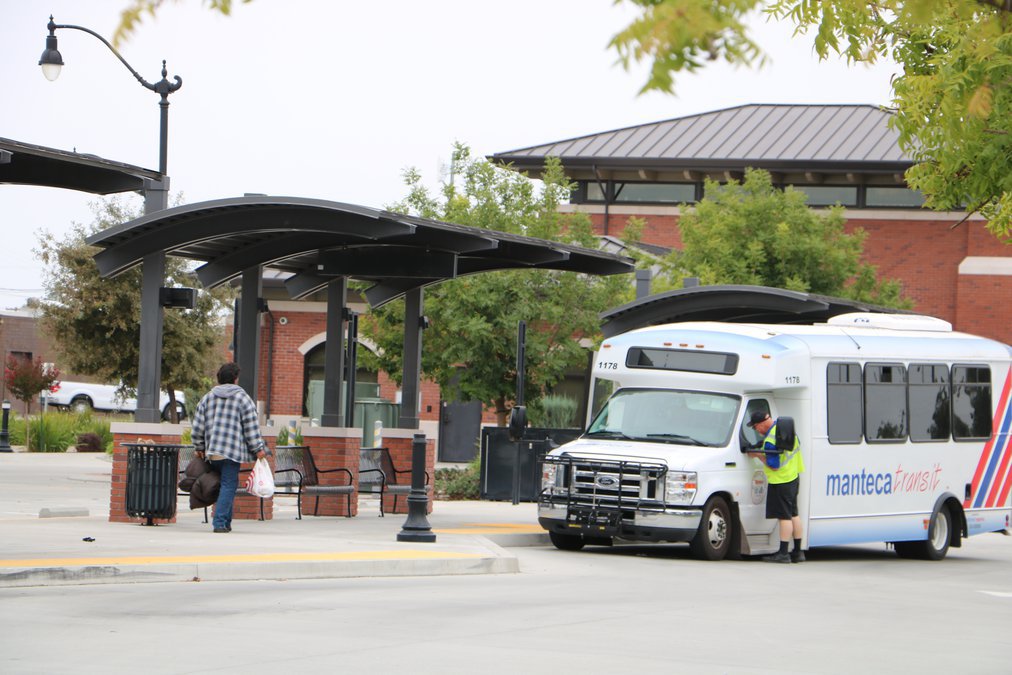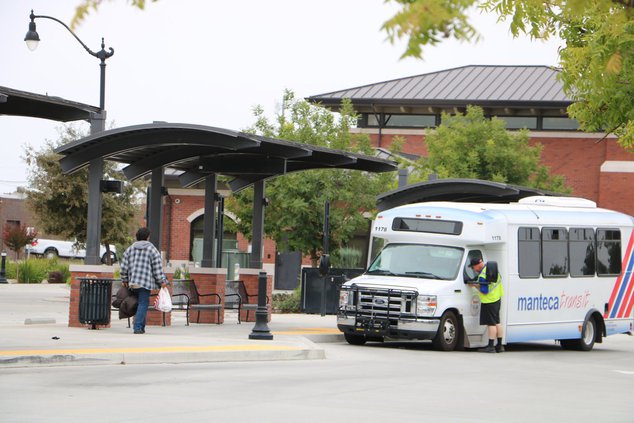Manteca is spending almost $270,000 to come up with a plan to make it easier for most economically disadvantaged residents in the neighborhoods in and around downtown to make use of the mobility options the Transit City is now providing and will add in the future.
The City Council earlier this month accepted a $238,966 Caltrans grant matched with $30,961 of in-kind city labor that involves conducting workshops and related activities in multiple languages including English and Spanish, a first for Manteca.
The back-up documents and staff report that was part of the agenda item background presented to the council describe the intent of the plan the grant would help create in broad and vague terms. It references Caltrans’ Smart Mobility Framework “which applies principles of location efficiency, readability mobility, health and safety, environmental stewardship, social and a robust economy to transportation challenges.”
It gives on to say it will address “land use and transportation efforts to improve connectivity, focus on lower income residents and create a more walkable and bicycle-friendly City.”
In other words, the goal is to make it easier for low income people to move about to access jobs, services, shopping and such in a safe manner that meets green environmental standards.
Given the Manteca Transit Center is slowing transforming into a true regional transit hub, the city by teaming up with the Local Government Commission of the Catholic Charities Diocese of Stockton was able to secure part of the $29.5 million offered statewide for such planning.
The Transit Center already serves as the main hub for Manteca Transit and the main connection point for San Joaquin Regional Transit buses. Modesto Area Express bus service added the transit center to its Stockton service that connects with train transportation to Sacramento.
Altamont Corridor Express (ACE) service that includes passenger rail connections to San Jose and Sacramento is due to start in 2023.
That means the transit center could be a key to those living in identified nearby “disadvantaged” neighborhoods such as Powers Tract, north and east of Sequoia School, north of Yosemite Avenue as far west as Walnut Avenue and north as Alameda Street to Fremont Street in the east to access education, employment, services, and shopping in Manteca, San Joaquin County and the larger region consisting of the Bay Area and Sacramento.
Census tract data shows the majority of the households in the area incorporated into the downtown transit center connectivity and enhancement plan have incomes below 80 percent of the statewide median household income. As such, the assumption is they might not own a car and may tend to travel more by walking, bicycling or using transit systems.
To contact Dennis Wyatt, email dwyatt@mantecabulletin.com





